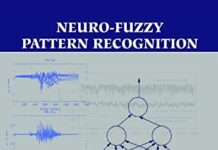
Ebook Info
- Published: 2001
- Number of pages: 244 pages
- Format: PDF
- File Size: 127.87 MB
- Authors: Horst Bunke
Description
Hidden Markov models (HMMs) originally emerged in the domain of speech recognition. In recent years, they have attracted growing interest in the area of computer vision as well. This book is a collection of articles on new developments in the theory of HMMs and their application in computer vision. It addresses topics such as handwriting recognition, shape recognition, face and gesture recognition, tracking, and image database retrieval. This book is also published as a special issue of the International Journal of Pattern Recognition and Artificial Intelligence (February 2001).
User’s Reviews
Reviews from Amazon users which were colected at the time this book was published on the website:
⭐
⭐
Keywords
Free Download Hidden markov models: applications in computer vision (Machine Perception and Artificial Intelligence) in PDF format
Hidden markov models: applications in computer vision (Machine Perception and Artificial Intelligence) PDF Free Download
Download Hidden markov models: applications in computer vision (Machine Perception and Artificial Intelligence) 2001 PDF Free
Hidden markov models: applications in computer vision (Machine Perception and Artificial Intelligence) 2001 PDF Free Download
Download Hidden markov models: applications in computer vision (Machine Perception and Artificial Intelligence) PDF
Free Download Ebook Hidden markov models: applications in computer vision (Machine Perception and Artificial Intelligence)
